Manchester is to the textile manufacture as Cabernardi is to the sulphur mine (only a matter of different fame all over the world). ? Are we exaggerating it a bit? Not at all, take a look at what we discovered.
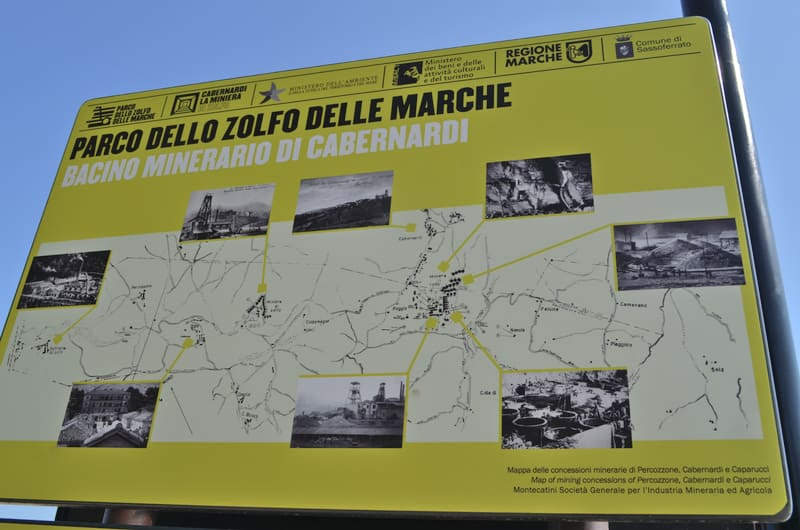
Cabernardi is one of the biggest hamlets in the surrounding of Sassoferrato. During our visit to the village, lead and organised by the extraordinary members of Happennines, we had the chance to visit the Mine Archaeological Park of Cabernardi. It was a very special occasion, for once we even managed to gather all three of us together, Isabelle, Elke and me!
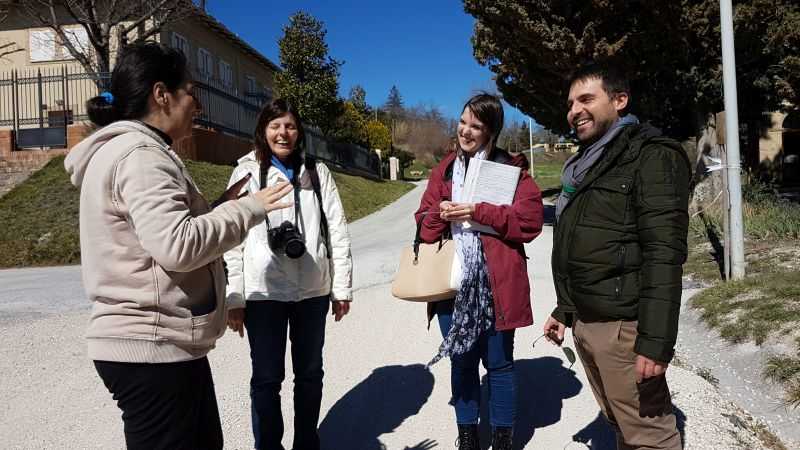
The guide of the mine 
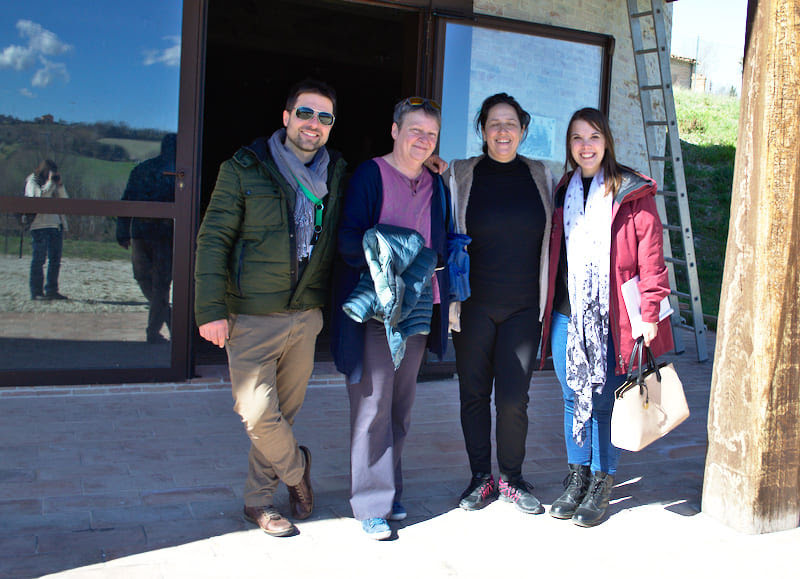
Gabriele from Happennines
The main reason for this mine to be used in the first place is sulphur. In this particular case, the sulphur is not of volcanic origins, but bacterial. Its acid properties render the landscape quite lunar and spectacular at the same time: the difference is just in front of you, just outside the mine the green hills frame the historical site.
Cabernardi is located in a large so-called sulphur basin, which was probably formed almost 6 million years ago when the Mediterranean Sea with its sediments deposited on the bottom was almost dry.
Sulphur, although known in antiquity, became increasingly popular in the 19th and 20th centuries and was used for fertilizing, preserving food, in medicine, but above all as gunpowder. The sulphur deposit was discovered accidentally by a farmer who was surprised that his cows refused to drink from the ponds in this area. He immediately called in the priest, who was smart enough to understand the importance of the new discovery.
Miners started to come to Cabernardi already in 1870; but it was only in 1917 that the big society Montecatini bought the mine at a very low price, and made it one of the most productive in Europe. At that time the incoming of miners was so high, that a village nearby spontaneously started to grow. There the miners, and their families, could find not only their accommodations, but also some shops.
The property of Montecatini included the mine itself, the animals and the tools, the changing rooms for the miners, the food storage for the animals and even the food itself. In total the property was of about 1000 hectares.
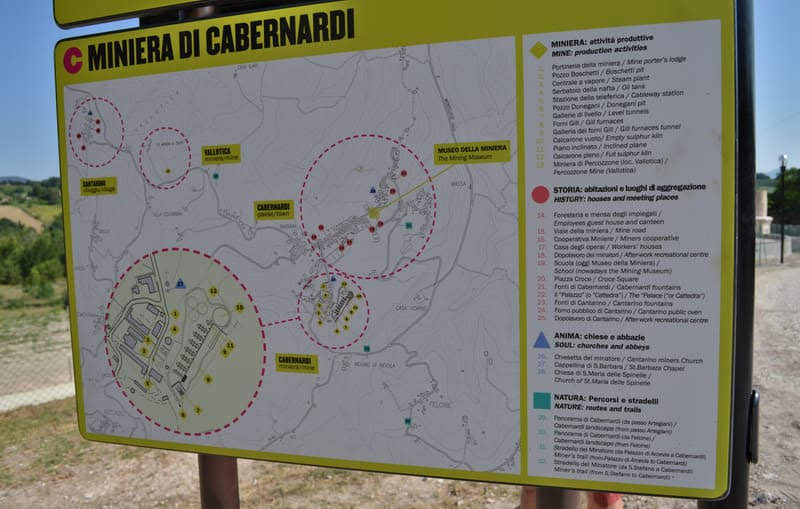
The “golden age” of the mine was about during the 30s and 40s, when the miners were about 300 (they could count on about 17 shops situated by the mine) with working shifts of 8 hours each. There were no holidays nor days off: the miners used to work 24/7, except on the 4th of December: the day of Saint Barbara, the protector of the miners (and the firefighters).
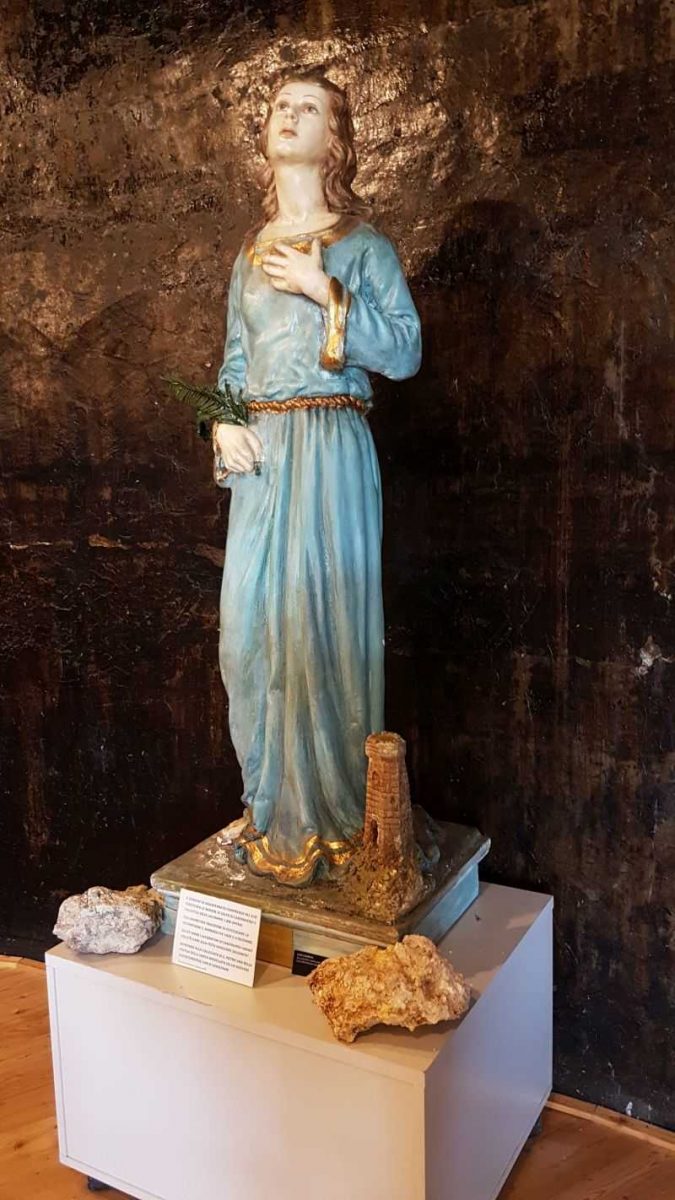
Santa Barbara 
Detail with a sulphur stone
Those miners became also (sadly) famous some year later, when in 1952 they got fired. There was indeed new technology coming especially from Canada, that made their work almost useless. They occupied the mine for 40 days! Eventually they succeeded in having some more years of work. However, the mine closed down in 1958.
In 1986 the Museum opened, and many years later, in 2015, also the mine itself.
When you enter the site, it seems like going back in time and you expect one of the miners coming up from the well in any minute. This well was the first big reinforced concrete structure in Italy and with its 18mt of height, it is nowadays the symbol of the mine.
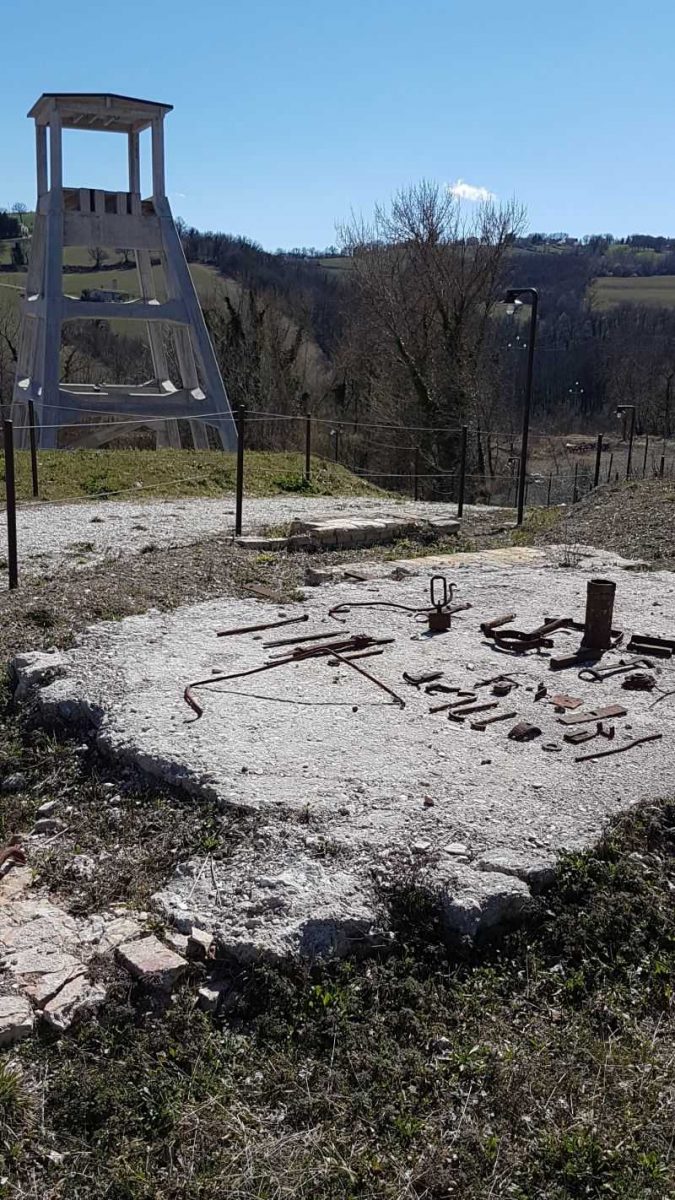
12 miners at a time could go down the wall to extract sulphur from about 80 km of galleries. They could reach up to the 21st level of extraction, with each level being about 30 mt high (I’m not a genius in math, but that makes about 900 metres of depth!).
After the sulphur is extracted and brough to the oven, it has to be reduced into liquid sulphur. This could be done by using the “Gill oven” or the so-called “calcarone”, a very old and long method (it could take up to 4 months). The “calcarone” has a circular shape of about 25 metres of diameter and an inclined floor. The wall around it is built with bricks and teared down after every process. There was just one brick that was left loose: it helped in checking if the fusion process was going on well.
The work was really demanding in Cabernardi: the sulphur was so much that the miners had to use both methods in order to have as much sulphur as possible. The work environment was also very team-based: the work was their only source of income, and their families usually hanged out in the little miners’ village near the mine itself.
The sad note is that 131 miners died, because of poor materials or clothes. Usually the miners preferred to go down the well instead of working next to the ovens.
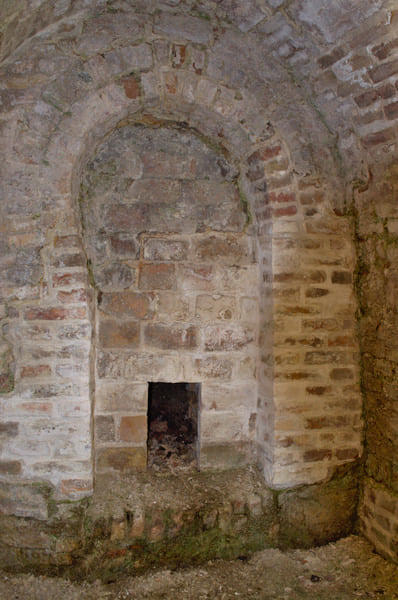
The loose brick to check the oven 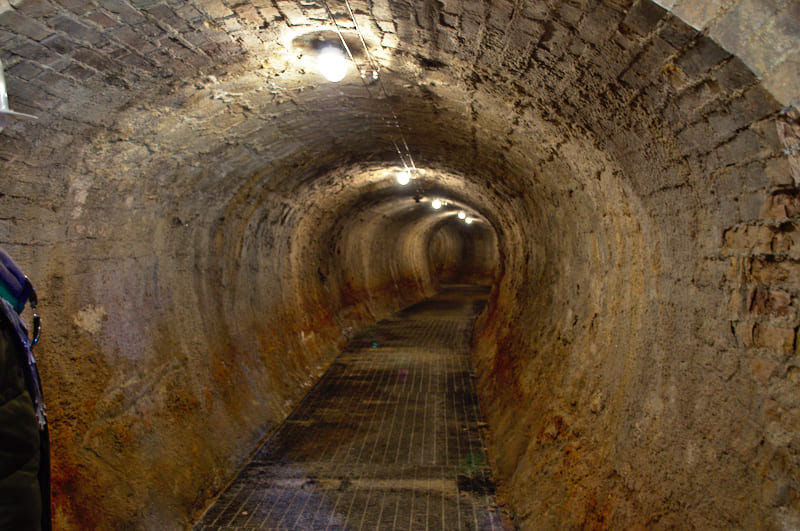
Extraction galleries
In the mine there used to be also a cable car that was connecting Cabernardi to another village, from where the sulphur was then exported.
The visit to the archaeological site is very rich in details and descriptions: at the end of one of the extraction galleries there is even a video with historic images from the mines.
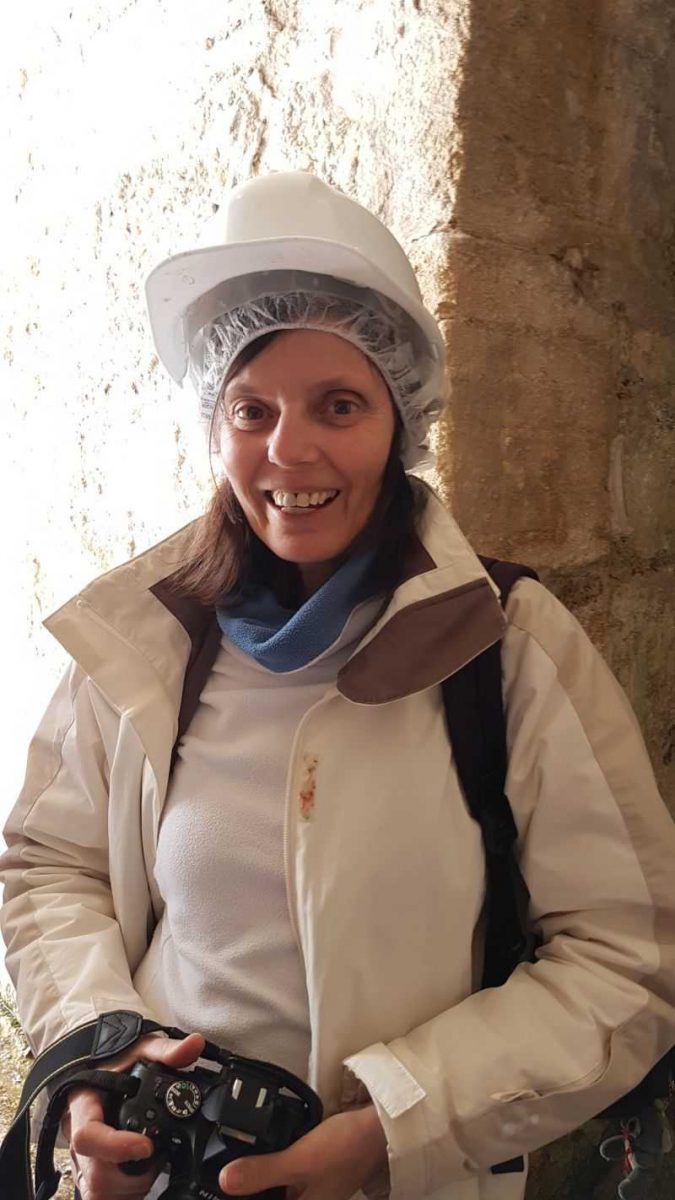
Isabelle 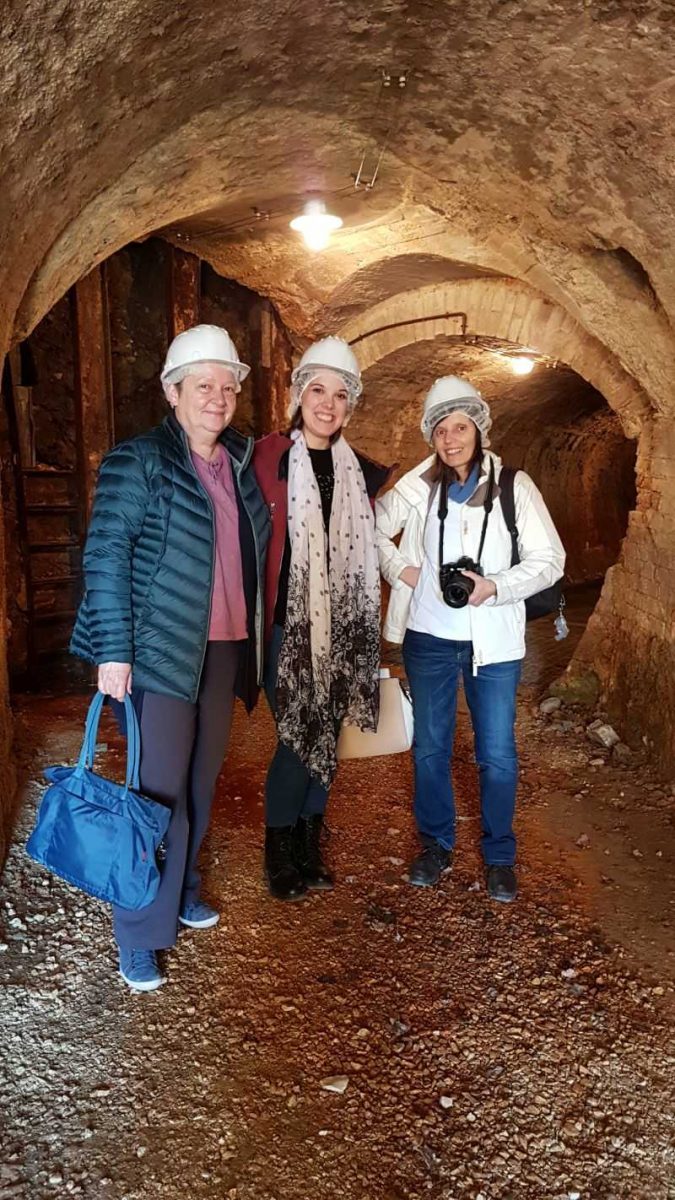
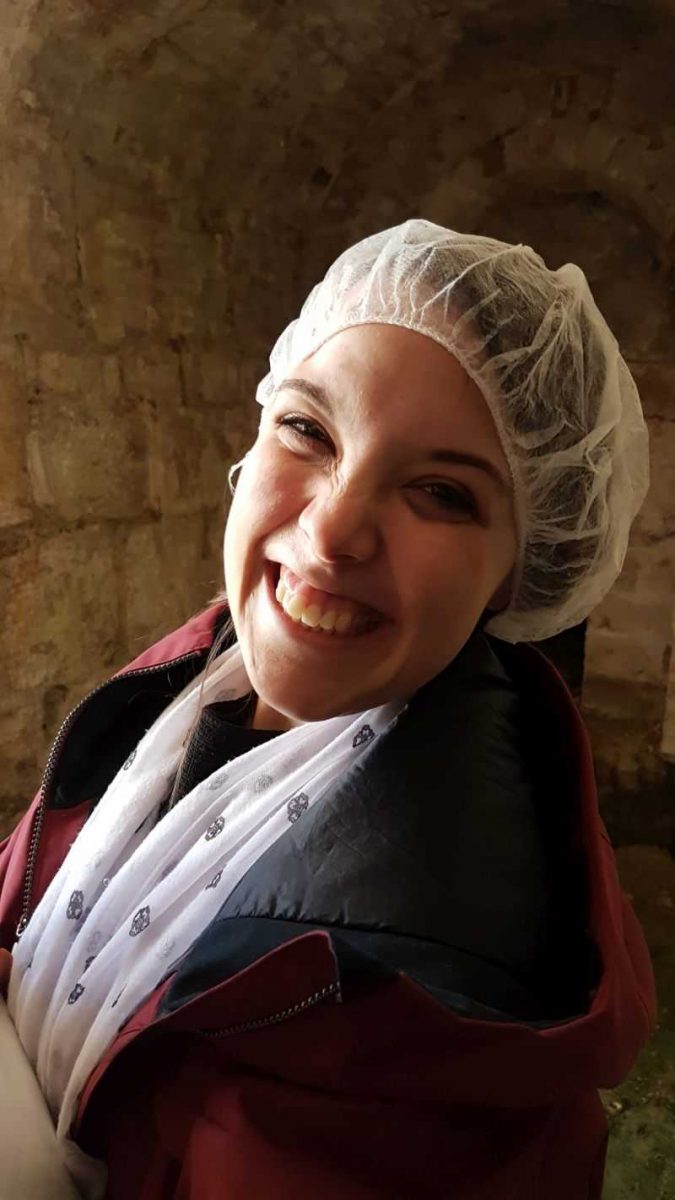
Me!
Fun story about Cabernardi is that the local people boast to be the best in playing football; or, at least, they can say so when they are playing the football camp next to the mine. The competitors are not used to the sulphur smell all over the air, and the Cabernardi team wins usually very easily!
The site is open all year long, but in Winter only on weekends. You can check their website, that unfortunately is only in Italian: http://www.minieracabernardi.it/

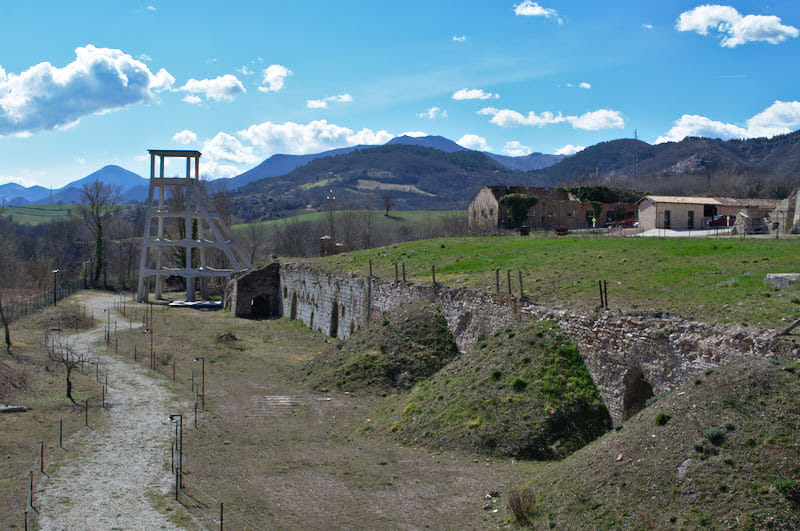
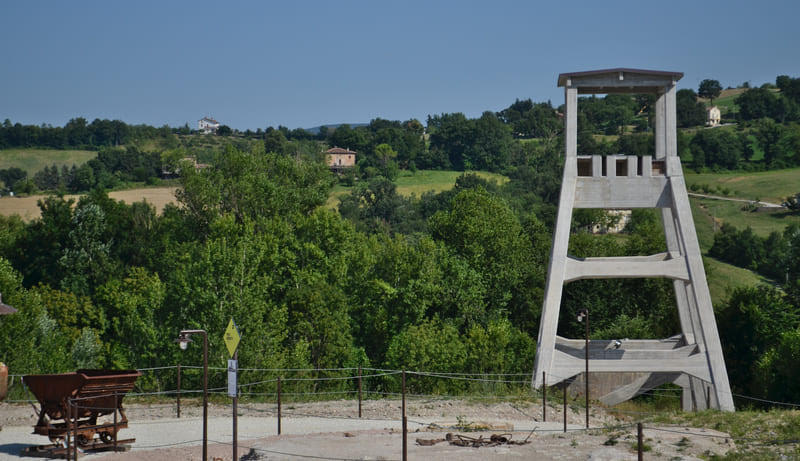
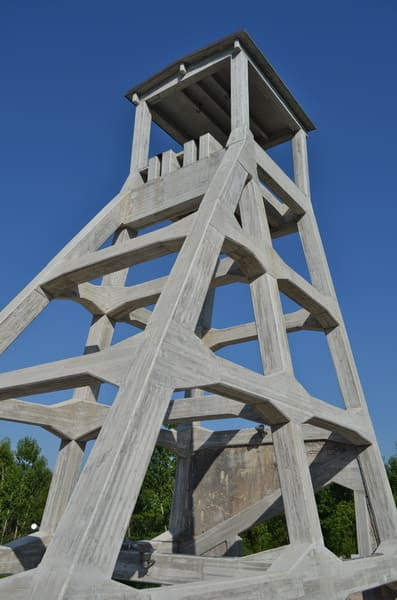
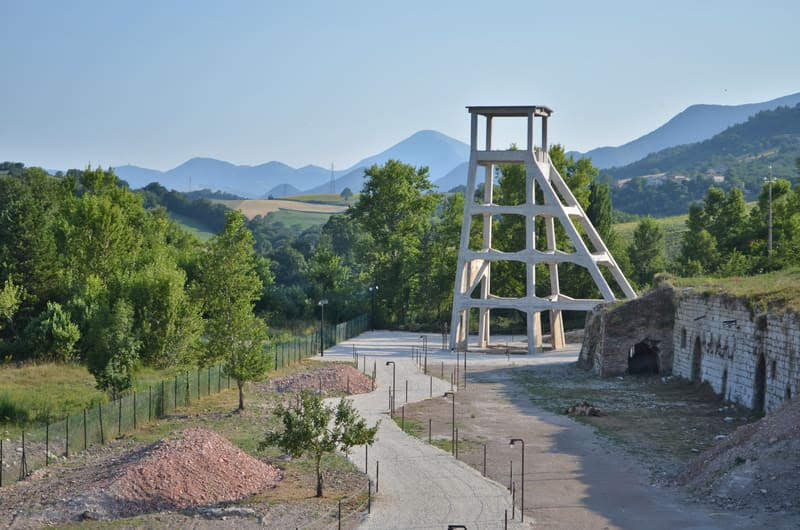
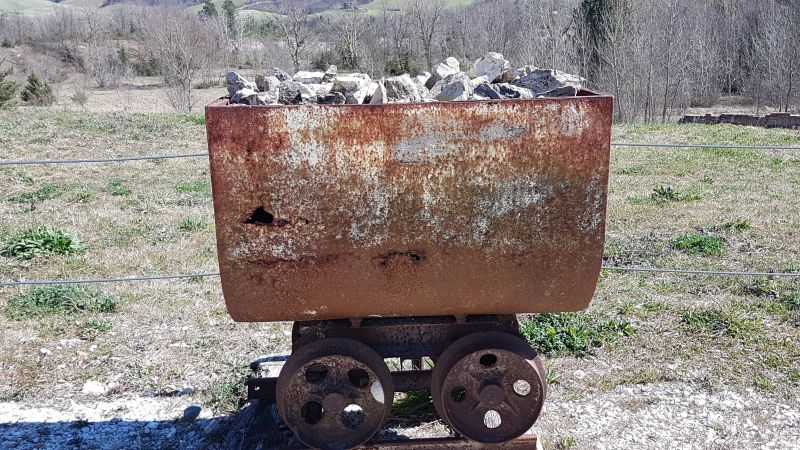
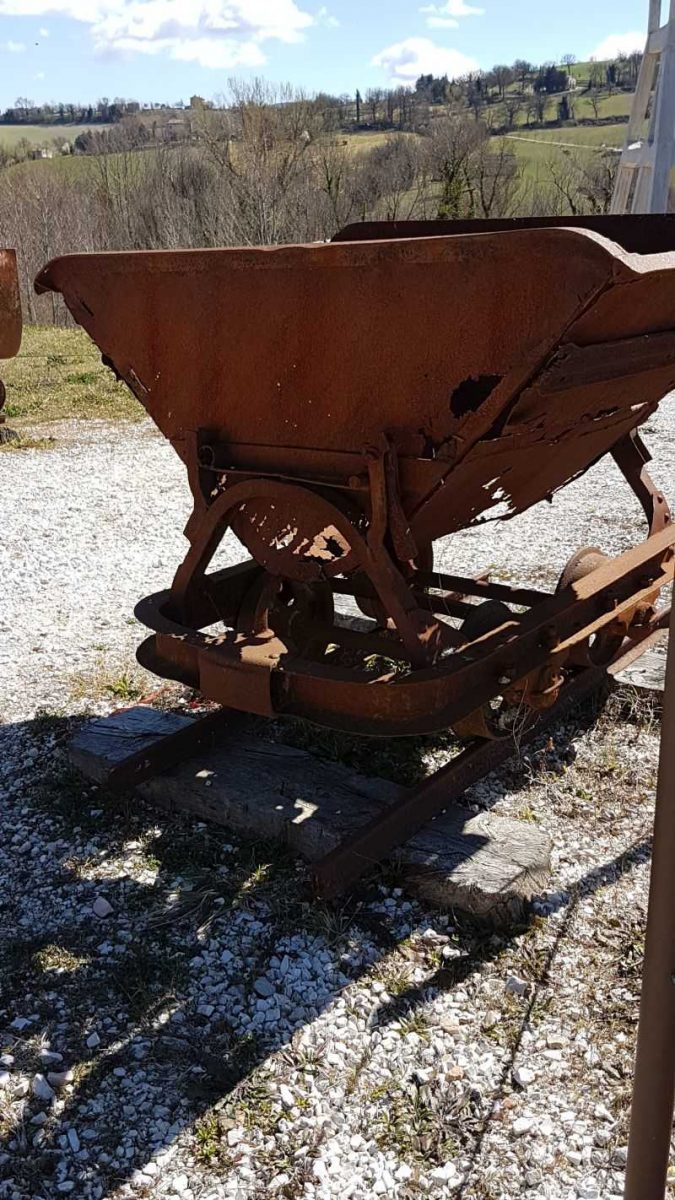

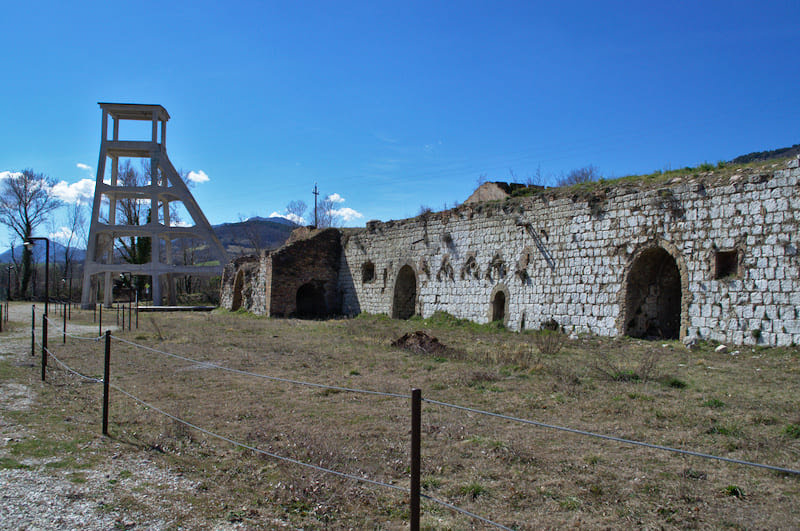
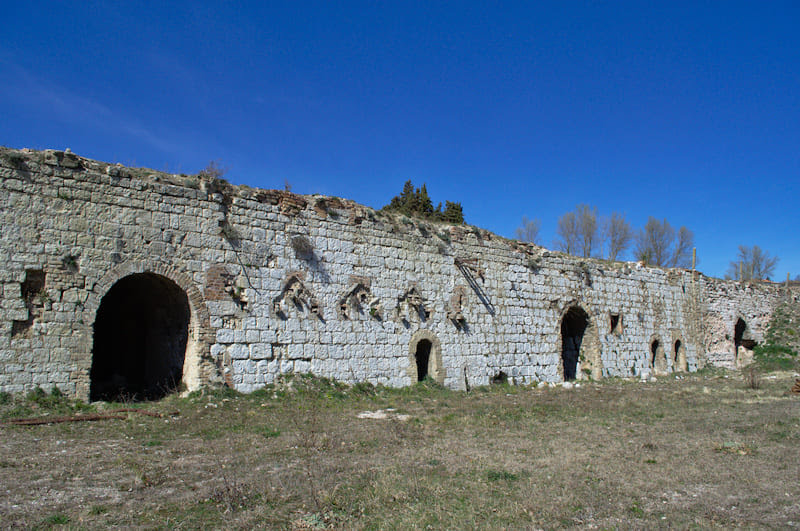
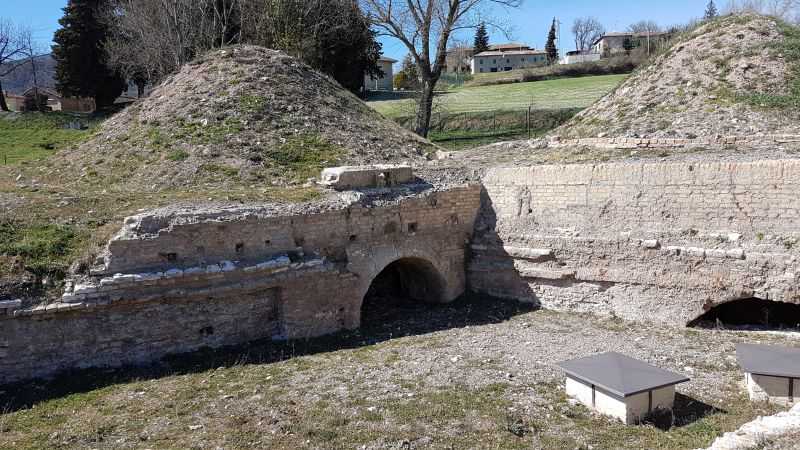
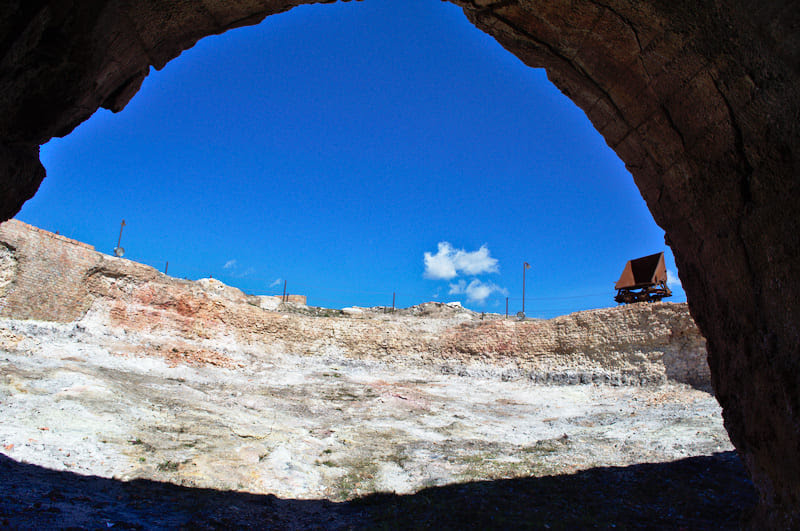

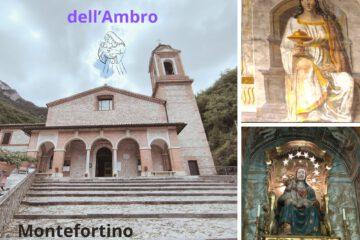

0 Comments